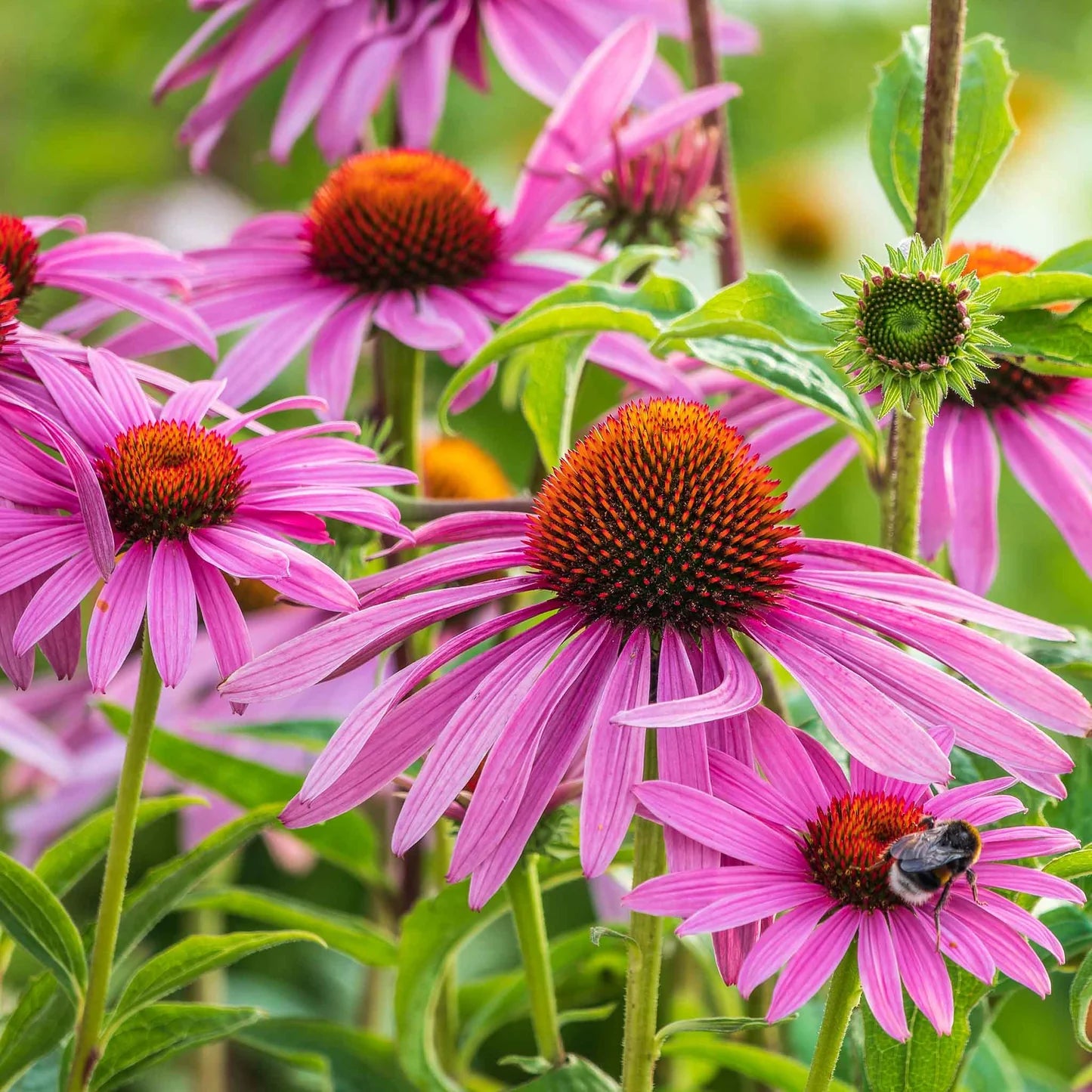
Dharaseeds
Echinacea Roots - Purple
Estimated delivery between April 14 and April 17.
Echinacea Roots - Purple are the foundation of one of the most well-loved and resilient perennial plants, the Purple Coneflower. Known for their immune-boosting properties and striking beauty, the roots of the Echinacea plant offer numerous health benefits while also providing long-lasting, vibrant flowers for your garden. Whether you're growing for medicinal use or adding ornamental value to your garden, these organic Echinacea roots are the perfect choice.
Key Benefits
- Medicinal Properties: Purple Echinacea roots are prized for their ability to enhance the immune system, fight infections, and treat colds and respiratory issues.
- Hardy and Resilient: Echinacea is known for thriving in a variety of climates and soil conditions, making it an excellent choice for gardeners looking for a durable, low-maintenance plant.
- Pollinator-Friendly: Echinacea attracts a wide range of pollinators, including bees, butterflies, and hummingbirds, enhancing your garden's ecosystem.
- Long-Lasting Beauty: The plant’s large, vibrant purple flowers are perfect for creating striking garden borders or for growing in containers.
- Drought-Tolerant: Once established, Echinacea roots are highly resistant to drought, making them ideal for water-conscious gardeners.
Variety Features
-
Plant Characteristics:
- Echinacea is a robust, perennial plant that grows up to 3 feet tall, with long, lance-shaped leaves and vibrant purple daisy-like flowers.
- The roots are thick and fleshy, containing powerful compounds such as alkylamides, which contribute to the plant’s medicinal uses.
- Flower Colors: The flowers feature purple petals surrounding a prominent, spiky orange-brown center.
- Height: Echinacea typically reaches 2–4 feet in height, with a spread of 1–2 feet.
- Root Characteristics: The roots are fibrous and can be harvested for medicinal purposes or propagation.
Planting Instructions
Planting Season
- Outdoor Planting: Echinacea roots should be planted in early spring or fall to allow for proper establishment before extreme temperatures arrive.
- Indoor Planting: If starting indoors, plant roots in early spring and allow for early transplanting after the last frost.
Planting Details
- Planting Depth: Plant the roots about 2–3 inches deep, ensuring that the crown (where the root and stem meet) is just below the soil surface.
- Spacing: Space plants 12–18 inches apart to ensure proper air circulation and growth.
- Soil Requirements: Echinacea prefers well-drained, loamy soil with a slightly acidic to neutral pH (6.0–7.0).
- Sunlight: Full sun is ideal for Echinacea, although it can tolerate partial shade in warmer climates.
Care Instructions
- Watering: Water regularly during dry spells to keep the soil consistently moist. Once established, the plant becomes drought-tolerant and requires less frequent watering.
- Temperature: Thrives in moderate to warm temperatures, ideally between 70°F–85°F (21°C–29°C). Echinacea is cold-hardy and can tolerate temperatures down to USDA zone 3.
- Fertilization: Echinacea generally does not require heavy fertilization. Light fertilization in early spring, especially if the soil is poor, can help promote vigorous growth.
- Deadheading: Remove spent flowers to encourage continuous blooming and prevent unnecessary seed production.
- Weeding: Keep the area around the plant free from weeds, particularly during the early stages of growth.
- Mulching: Apply a thin layer of mulch around the base of the plant to retain moisture and prevent weeds.
Harvesting
- Timing: Echinacea roots are typically ready for harvesting in late fall after the plant has gone dormant. This ensures the roots have accumulated their full medicinal potential.
- Method: Gently dig around the plant’s base to lift the roots. Take care not to damage the root system if you plan to divide or propagate the plant.
- Storage: Clean the roots and store them in a cool, dry place for medicinal use or replanting. You can dry the roots to make teas, tinctures, or other herbal remedies.
Storage
- Short-Term: Freshly harvested roots can be stored for a short period in a cool, dry location, or used immediately in medicinal preparations.
- Long-Term: Dried roots can be stored for long periods in airtight containers and used for herbal teas, tinctures, or supplements.
Culinary & Medicinal Uses
Medicinal Uses:
- Echinacea roots are traditionally used to make teas, tinctures, and capsules aimed at strengthening the immune system.
- They are also thought to help fight infections, reduce inflammation, and ease symptoms of colds and flu.
- Echinacea root is commonly used in herbal remedies to enhance the body’s natural defense mechanisms.
Culinary Uses: While Echinacea roots are primarily medicinal, they are occasionally used in herbal teas or as a health tonic, adding an earthy, slightly bitter flavor.
Conclusion
Echinacea Roots - Purple are a must-have for gardeners and herbal medicine enthusiasts alike. Their robust medicinal properties, combined with the plant’s easy care and stunning flowers, make them a valuable addition to any garden. Whether you're growing Purple Coneflower for its vibrant blooms, its ability to attract pollinators, or for the health benefits of its roots, Echinacea is a versatile and hardy plant that will reward you year after year.








